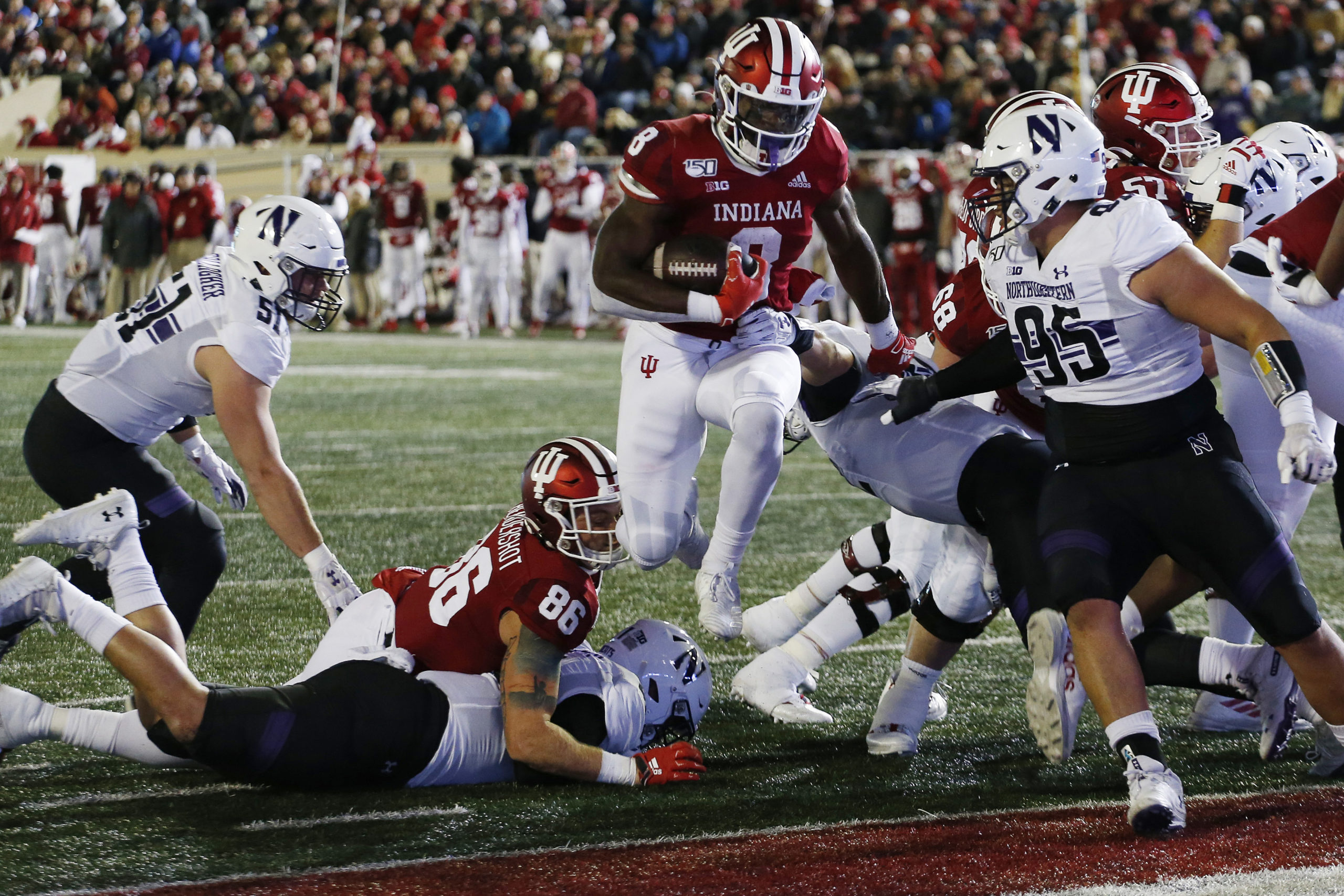Ad Disclosure

Nick Sheridan says all the right things.
As Indiana’s new offensive coordinator — the former tight ends coach took over following Kalen DeBoer’s departure to Fresno State — Sheridan wants to run a balanced offense, take what the defensive gives it, etc.; he hits all the clichés and he knows it.
But it’s true, too. Although Indiana had one of the Big Ten’s best offenses last season, ranking third in total offense (432.8 yards per game) and fifth in scoring (31.8), it was too often one-dimensional. That especially came to light against the Hoosiers’ better opponents, as one might expect. In IU’s five losses last season, they averaged 75.2 rushing yards per game, and while you’ve got to hand it to the Hoosiers for trying to stick with it — they averaged nearly 32 attempts per Saturday — they weren’t productive, averaging only a lousy 2.37 yards per rush.
IU’s offense was good but lopsided: second in the B1G in passing yardage per game (302.4) and 12th in rushing (130.4).
And so that’s where Sheridan needs to find ways to make his offense even more productive, particularly in critical short-yardage situations that can make or break an outcome.
“You need to have some versatility in your offense where you feel confident that when we have to pass it, we can, and when we have to run it, we can,” Sheridan told the school’s website during training camp.
Sheridan has the know-how to make it happen, having worked under DeBoer as an offensive assistant at IU the previous three seasons, the first two as quarterbacks coach (a title he has again now) and last year as the tight ends coach. Taking over for DeBoer has been a smooth transition, especially considering Sheridan’s familiarity with the personnel of the veteran IU offense.
Sheridan coached potential star quarterback Michael Penix Jr. two years ago and saw the current 6-foot-4, 218-pounder dazzle as a true freshman before a knee injury ended his season. And Sheridan is with the QB again now in position meetings and will be calling the plays on Saturday, starting in Week 1 vs. Penn State at 3:30 p.m. ET Saturday in Memorial Stadium.
Sheridan has a 1,000-yard receiver in senior Whop Philyor and other capable wideouts; a veteran tight end in Peyton Hendershot; and at least two quality running backs in junior Stevie Scott III and sophomore backup Sampson James.
Whether IU can maintain at least some balance against Penn State on Saturday, and the likes of Michigan, Ohio State and Wisconsin later in the season, might depend on the ability of the offensive line to gel quickly. Long one of the Hoosiers’ strong suits, it has some rebuilding to do this season, replacing a couple All-Big Ten-caliber players (although Coy Cronk, now at Iowa, missed much of last season with an injury). It did so in part by bringing in three transfers. They’ll have to get up to speed quickly.
If they do, IU has a chance to be even a tick better offensively.
Much will largely look the same. Sheridan has the luxury of taking over an offense that has already been proven to work, throwing up more than 30 points in nine games last season while leading the way to the Hoosiers’ eight wins and a bowl berth.
But one might see subtle differences, due as much to Penix as the playcalling.
With Penix at the helm — full time and for a full season, it is hoped — look for Sheridan to try to push the ball harder down the field. Among Penix’s many strengths, his powerful left arm might be at the top of the list. He can zing it, as evidenced by his averaging nearly 13 yards per completion before the injuries last season. That ability to get the ball down the field, plus his own ability as a runner, should serve IU well in setting up the running game.
IU will find out more from Day 1. The Hoosiers competed in Happy Valley last season, trailing by only 3 in a high-scoring first quarter, then by 6 at the half. They were within 3 with 10 minutes to go, but a 9-minute Nittany Lions drive put an end to the upset hopes.
In that game, IU rushed for 91 yards, but it took the Hoosiers 31 attempts to get there. Perhaps slightly better production alters the outcome and gives Indiana the marquee Big Ten win it seeks.
That’s Sheridan’s goal.
Kyle Charters, a familiar face at Gold & Black, covers Purdue, Indiana and college basketball for Saturday Tradition.